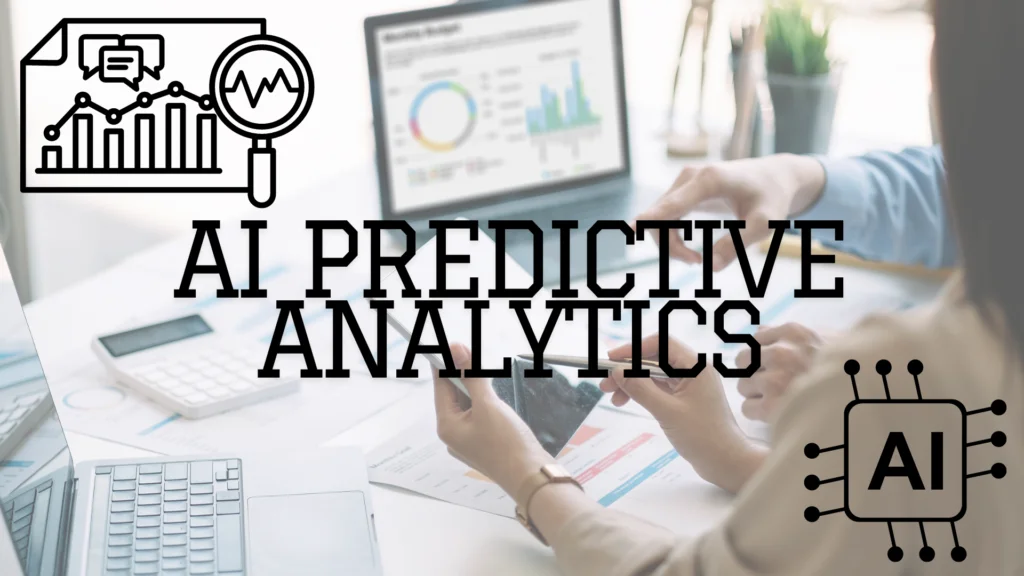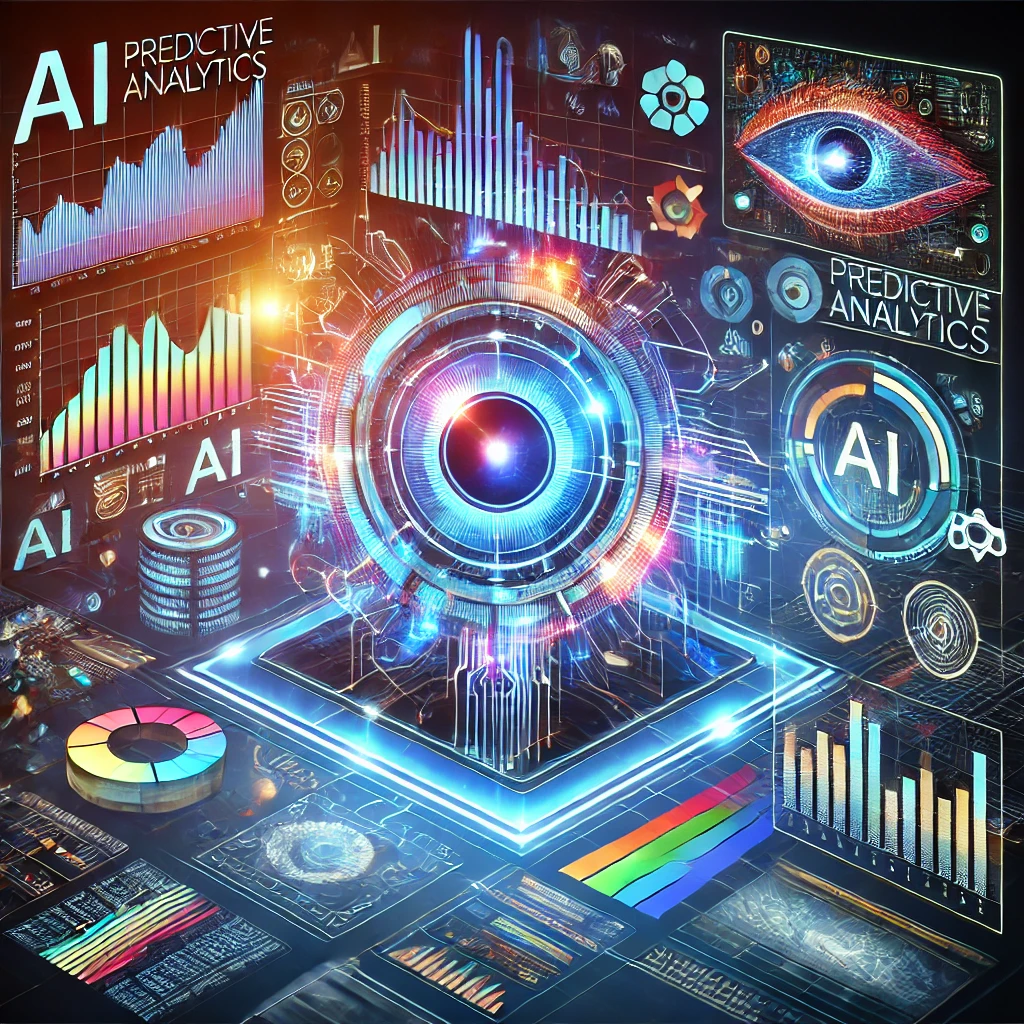AI Predictive Analytics for Businesses: Foreseeing the Future
It’s no wonder that AI is all the rage right now. And with this silver platter of a technology, comes features like AI predictive analytics that go beyond surface-level technicalities.
If businesses nowadays are all about timeliness and having the right data at the right time, then being able to forecast the future is more than just an added feature but a requirement. Today, companies within every field are putting smart technology to practice in pursuit of a competitive edge. Join the exciting field of predictive forecasting in this blog. A novel crucial technology that makes companies see possibilities and the know-hows, for seizing the opportunities that follow.
If you want to see where AI is revolutionizing technologies, you can learn more here.

What is AI Predictive Analytics All About?
According to the research, AI predictive analytics means utilizing AI, statistical modeling, and other machine learning procedures and algorithms. These are applied to data analysis with the purpose of predicting a potential future event given the outcomes of prior events. It is somewhat like a future predictor thing, but in this case, the information received is factual and logical. These tools assist in evaluating volumes of information to foretell tendencies, behaviors, or probable incidents. That would assist firms to make correct decisions with higher confidence. Tools like Tableau and SAS are leading the way in this space.
To gain more insights on how AI has revolutionized financial analysis predictions, learn more here.
The Mechanics of AI Data Prediction
You can define AI predictive analytics as the process of using AI data prediction as the main premise. This process involves taking in, conditioning, and analyzing huge volumes of data to make forecasts about the future. Using historical data, anomalies, and trends within these systems can be identified much easier in contrast with the qualitative appraisal done by analysts. The process of AI data prediction involves a few key steps:
Data Collection: This data is obtained from attributes like transactions, page views, and some customer experiences. This data is used for training the models for artificial intelligence.
Data Cleaning and Conditioning: Data is not always clean; it can be noisy, skewed, and even contain missing values. Before a predictive model is developed, data has to be pre-processed by enhancing data quality for better predictions.
Model Training and Testing: Artificial intelligence models are worked out on past data where they acquire patterns for their predictions. This involves using input data to tune the model for precision as a form of training. Once a model has been baseline satisfactory, it is then tested in order to ensure that it can provide effective solutions applicable for actual situations.
Training and learning in a predictive analytics tool is a critical component in AI data prediction because the system can adapt to new and better results as time goes by. Given more data, the programmers improve on their algorithms and this makes them much better than the previous ones. One feature that distinguishes the AI predictive analytics approach from traditional methods is its ability to learn without explicit programming, unlike a set of predefined equations used for forecasting that remain unchanged over time.
AI Prediction Tools: Their Role
Today, predictive forecasting is a complex array of applications and solutions for various industries and needs. For example, in the retail industry, these tools might be applied to estimate consumers’ needs and stock regularity and promote targeted advertising for sales and services. In healthcare, for example, they can be used to forecast patient status, enhance diagnostic precision, and possibly recognize epidemics before they begin.
1. Demand Forecasting: This approach equips businesses with relevant consumer demand data, allowing them to avoid overstocking and minimize excess and waste. For instance grocery store chains may apply predictive analytics in the management of perishable products.
2. Customer Segmentation and Targeting: With the help of AI, business organizations can easily segment customers based on their activities and purchasing power within organizations. With this segmentation, it will be possible to convince numerous customers to buy the products they need by proposing relevant recommendations.
3. Risk Management: In fields such as finance, it analyzes risks that are likely to occur in loaning, in investments, or fraud. From these transactions, the bank can isolate potentially risky transactions, avoiding cases of fraud in the process.
4. Healthcare Outcomes: Heath care providers employ predictive analytics in an effort to forecast patient outcomes. Using the collected patient information, they can create beneficial treatment approaches, utilize resources wisely and prognose possible health emergencies.
5. Churn Prediction: Customer churn analysis refers to the ability to recognize customers that are likely to depart. Using this information firms can prevent clients from going astray by perhaps providing them with a better discount or a better service.
Example in Healthcare: Predictive analytics detects a patient’s vital signs for signs of sepsis, a severe and potentially fatal infection. Using patient data, the checklists help healthcare workers identify possible sepsis cases in advance and act, thus, save more lives.
For instance, this article demonstrates how predictive analytics and marketing is imperative to businesses.
Machine Learning in Predictive Analytics
While many firms use predictive metrics, the importance of such tools would be next to zero without machine learning predictive analysis. Machine learning is a subsection of AI as it pertains to the development of models in order to make predictions.
In predictive modeling, artificial neural networks generate models designed to forecast future events with minute-level accuracy. These models use past data to recognize patterns and correlations, which they then apply to infer future occurrences.
For instance, the financial industry uses machine learning predictive analysis to estimate stock values, uncover new investment opportunities, and detect scams. In marketing, you can leverage it for predicting customer behavior, allocating budgets optimally for ads, or grading leads.
One of the major strengths of machine learning and predictive analysis is that it evolves as time progresses. The great thing about this approach is that as more data becomes available, you can re-compute more models to reflect newly emerged trends and patterns.

A Foreseeable Future with AI
The future of AI forecasting will further entice companies and industries to adopt AI predictive analytics as it presses on. As the field of machine learning and data processing progresses and techniques and algorithms become more complex, these tools will become more efficient, offering even better insights.
A major benefit of AI forecasting is that it makes AI recommendations more accessible to the masses. Traditionally, big businesses that could afford to scale comprehensive data analysis and expertise primarily used predictive marketing analytics. However, with the availability of cloud-based predictive analytics business companies of all sizes are now able to access these tools. Hence the probability of small businesses competing with large businesses in the industry becomes a thing.
With the advancement of AI, we can envision the future of analytics such as real-time analysis, analysis that makes decisions on its own, and analysis delivered based on the user. They will undoubtedly shift industries and spur innovations in the economy that may be difficult to comprehend at present.
Why AI Predictive Analytics Matters
Competition is rife in the current business world, and therefore deviating from the norm and maintaining competitiveness is imperative. AI predictive analytics for business strategy is a strong approach that every business needs when making the right decisions. Through Machine learning on certain analytics models, predictive analytics tools, and AI data prediction, a firm is in a better position to predict future conditions, improve clients’ satisfaction, and outcompete its rivals.
Here’s how it impacts decision-making:
1. Strategic Planning: Business intelligence enabled by AI predictive analytics gives businesses an insight into the future markets and market trends. Such a response assists business entities to be a step ahead of their counterparts in the market.
2. Cost Optimization: This approach allows companies to better balance supply and demand, helping them avoid unnecessary costs related to overproduction, underproduction, and excess inventory. This is important most in the production and sales sector bearing in mind that optimal use of these resources forms the cornerstone of profit.
3. Enhanced Customer Experience: Predictive analytics improves customer experience by gathering necessary information on customer requirements. Customization of services and products implies the option to improve overall satisfaction, thus increasing retention rates.
Example in Customer Experience: For instance, predictive analytics allows hospitality services to treat guests based on their previous records. For instance, a hotel may know whether a guest will want a certain room and also suggest events that the guest will enjoy because of previous choices.
If you’re interested in learning more about AI and machine learning, check out this comprehensive guide.
The Bottom Line
You cannot overemphasize AI in predictions. It has brought dramatic changes into the decision-making sphere of any business. This enables them to harness big data as never before. Given the current technological advancements, AI predictive analytics will form a more central focus as strategies of various firms all across.
Are you all ready and set to modernize your approach to forecasting? Consider reviewing the available software solutions for predictive analytics in your business field, or approach professionals who offer implementation services. Avail the benefits of business intelligent AI predictive analytics before other contender businesses do!